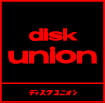- おすすめキーワード
-

入荷♪ 音の始源を求めて13 松平頼曉 ZENEI(前衛) NHK電子音楽スタジオに残した「テープ音楽」2曲を収録
- NOISE / AVANT-GARDE
- 新着ニュース
2024.06.17

THE BEGINNING OF JAPANESE ELECTROACOUSTIC VOL.13 YORIAKI MATSUDAIRA / 音の始源を求めて13 松平頼曉 ZENEI(前衛)
THE BEGINNING OF JAPANESE ELECTROACOUSTIC 音の始源を求めて
松平頼曉がNHK電子音楽スタジオに残した「テープ音楽」2曲を収録
サウンド3 / JPN / CD / OUOADM202405 / 1008860911 / 2024年05月27日
- NOISE / AVANT-GARDE
- CD
- 新品在庫取寄せ
- (5日~3週間後に発送)
2,750円(税込)
- CD
- 新品在庫取寄せ
- (5日~3週間後に発送)
※5,000円(税込)以上買うと送料無料!新品でも中古品でもOK!
1トランジェント’64 1964年制作
この作品は、作曲者によって正方形の方眼紙に書き込まれた図を90度毎に回転させながら、音のパラメータを決める制作方法が取られた。例えば、縦軸を周波数、横軸を時間、あるいは強さなど、縦軸と横軸それぞれを、自由に決めていった。更に、この図面上の色分けによって音色を決めた。
制作するにあたり、我々は、過渡的な音色「トランジェント音」を持った正弦波のクラスタを作った。トランジェント音は、6チャンネルの正弦波発振器の電源を投入したときに、真空管が加熱されるまでに生ずる過渡的な発振音や、破損しかけたスピーカに正弦波クラスタを瞬時にかけた時の音など、多くの過渡的な音(いわゆるトランジェントな音)のみを素材にして制作された。
2テープのためのアッセンブリッジス 1969年制作
第1作の《トランジェント'64》と同様に不確定要素を取り入れた作品。この曲の特徴は、発振音源に「フォトフォーマ」が使われたことである。電子音楽では、それまで、正弦波、鋸歯状波、方形波など、波形の決まった音源とホワイトノイズが使用されていたが、これらの発振器では自由な音色の作成は不可能であることに気づいた。そこで考えられたのがフォトフォーマであった。これは自由な図形を描き、それを波形と見立てて電子音を発生させるために開発された「音声任意波形発生器」の一種である。この機器の製作は非常に古く、1963年のことである。なお当時は、まだ「音色は波形によって決定される」と考えられていた。
Transient '64, produced in 1964, composer Yoriaki Matsudaira
In the production process, a cluster of sine waves with a transient tone, referred to as 'transient sound', was created.
The material was created using only transient sounds,
such as the transient oscillation sound produced when a six-channel sine wave oscillator
is switched on before the vacuum tubes are heated,
or the instant a sine wave cluster passes through a damaged loudspeaker.
Assemblages for Tape, produced in 1969, composer Yoriaki Matsudaira
Until now, electronic music has used sound sources with fixed waveforms,
such as sine waves, sawtooth waves, square waves, and white noise.
With these oscillators, it is impossible to create free tones. The photoformer was then conceived.
We thought that if it was possible to create freely drawn waveforms, then it would be possible to create freely drawn tones.
The photoformer was used for the search of a tone imagined from a drawn figure,
but the pulse noise generated by the return time of the cathode ray was so heavily mixed in
that the sound of the drawn waveform was faintly audible, buried in this noise.
The piece was born out of the idea that such sounds were necessary in a work with uncertain sounds.
最新ニュース
-
2024.07.12
- NOISE / AVANT-GARDE
入荷♪ LARAAJI ララージ / GLIMPSES OF INFINITY ニューエイジ・レジェンド 初期ワークス & スタジオ・セッション音源集
-
2024.07.02
- NOISE / AVANT-GARDE
入荷♪ CURRENT 93 カレント93 / THE LONG SHADOW FALLS 終末フォーク / ネオ・フォークのパイオニア的存在 キャリア初のCDボックスセット
-
2024.07.02
- NOISE / AVANT-GARDE
入荷♪ IANNIS XENAKIS ヤニス・クセナキス / ELECTROACOUSTIC WORKS 20世紀の前衛音楽に最も影響を与えた作曲家の一人 生誕100周年記念ボックス
-
2024.06.25
- NOISE / AVANT-GARDE
入荷♪ DUVAL TIMOTHY デュヴァル・ティモシー / 2 SIM ジャズ、エクスペリメンタル、エレクトロニック・ミュージックを横断する唯一無二の才能 2018年傑作EPが待望のリプレス
-
2024.06.20
- NOISE / AVANT-GARDE
-
2024.06.19
- NOISE / AVANT-GARDE
入荷♪ G.S. SCHRAY / WHISPERED SOMETHING GOOD みずみずしいアンビエンスとメロウネス、そして美麗極まりないジャジー・グルーヴは更なる高みへ!
-
2024.06.18
- NOISE / AVANT-GARDE
入荷♪ GROUP LISTENING / WALKS サム・ゲンデル、日本の環境音楽にインスパイアされたUKグループ 待望の2ND
-
2024.05.23
- NOISE / AVANT-GARDE
入荷♪ NAEMI / DUST DEVIL コクトー・ツインズとハロルド・バッド、そしてアーリー00'S R&Bを結ぶD.I.Y.エクスペリメンタル・ドリームポップ傑作!!
-
2024.05.21
- NOISE / AVANT-GARDE
入荷♪ ヌーノ・カナヴァーロ、吉村弘らにインスパイアされた超絶ハイ・クオリティの現行アンビエント / モダン・ニューエイジ大注目盤!! FUNCIONARIO / MOMENTO CLARO












